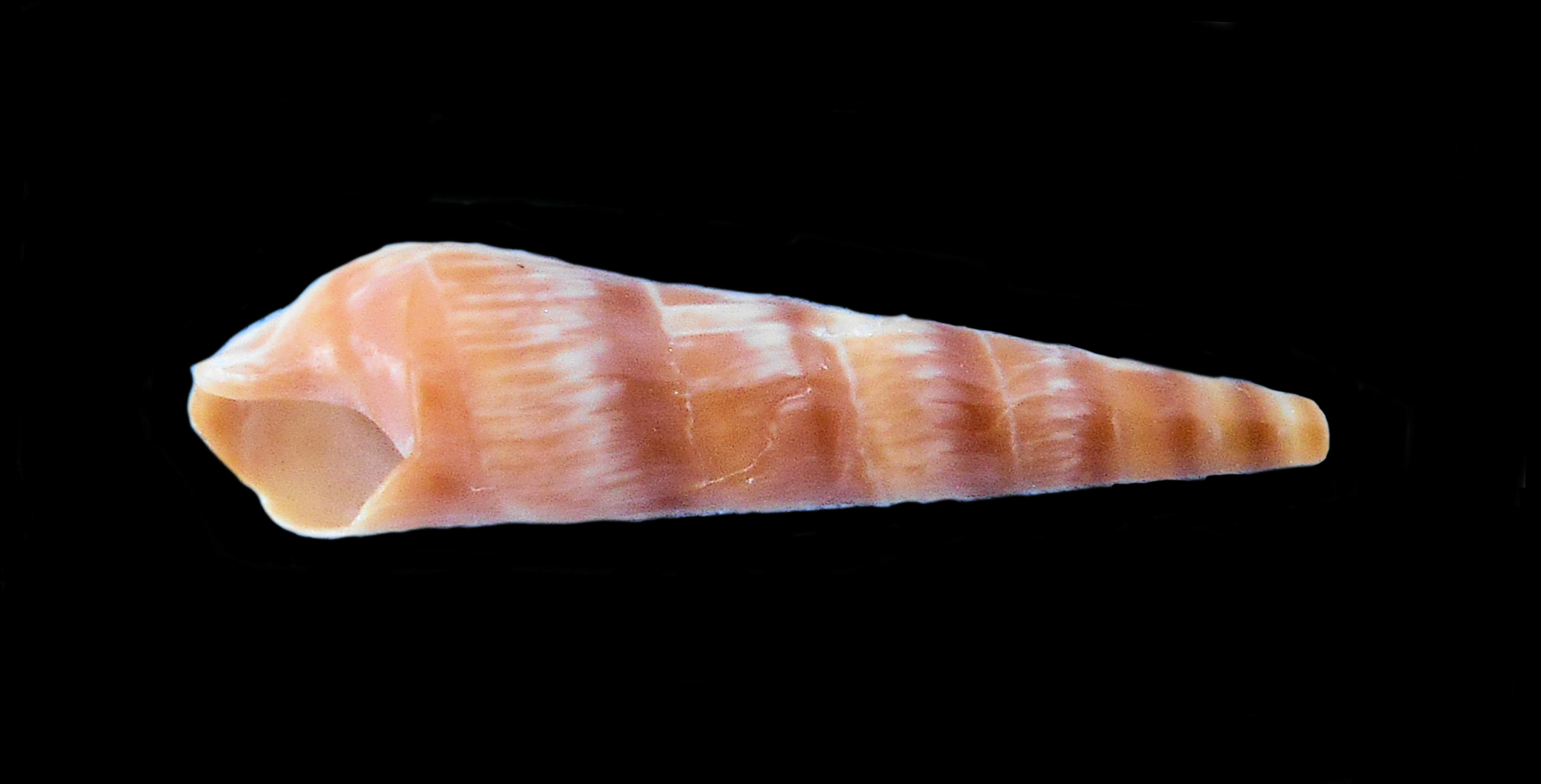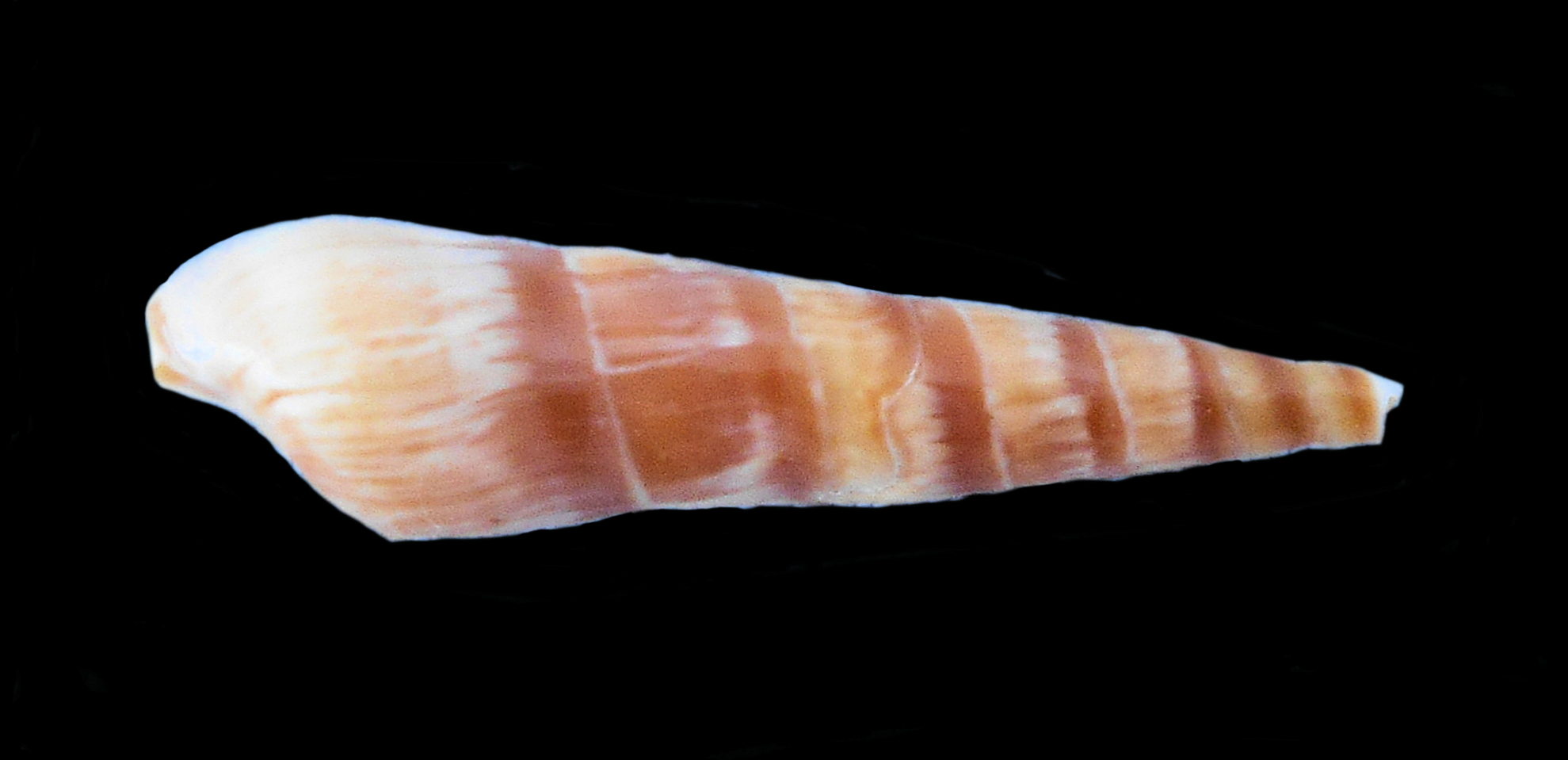Acuminate Auger Shell, Hastula cinerea

 Acuminate Auger Shell, Hastula cinerea. Shell collected from the beaches of the greater Los Cabos area, Baja California Sur, March 2008. Size: 2.6 cm (1.0 inch) x 0.7 cm (0.3 inches). Identification courtesy of Bob Hillis, Ivins, Utah.
Acuminate Auger Shell, Hastula cinerea. Shell collected from the beaches of the greater Los Cabos area, Baja California Sur, March 2008. Size: 2.6 cm (1.0 inch) x 0.7 cm (0.3 inches). Identification courtesy of Bob Hillis, Ivins, Utah.
The Acuminate Auger, Hastula cinerea (Born, 1778), is gastropod mollusk that is a member of the Terebridae Family of Augers. The shells are small and slender that consist of about ten, flat sided whorls with slight indentations between. Lengthwise riblets and very fine spiral lines may sculpt the shell, but in many cases, are undetectable. The aperture is elongate, the siphon canal is short, and the inside edge of the aperture (columella) is straight. They can be gray, tan, blackish-brown, or purplish brown in color and the upper half of each whorl may be marked by darker lines that fade mid-whorl. The Acuminate Auger reach a maximum of of 4.1 cm (1.6 inches) in length and 1.1 cm (0.4 inches) in height.
Acuminate Augers are found within sand habitat, in the intertidal zone to depths of 26 m (85 feet). They range from Mazatlán to Ecuador in the Pacific and are also found in the Atlantic Ocean. There is no documentation of this species being found along the Baja Peninsula, but this specimen was collected in the greater Cabo San Lucas area of Baja California Sur.
Synonyms include Buccinum cinereum, Hastula luctuosa, Impages cinerea, Terebra acuta, Terebra cinerea, Terebra jamaicaensis, Terebra laurina, and Terebra luctuosa.